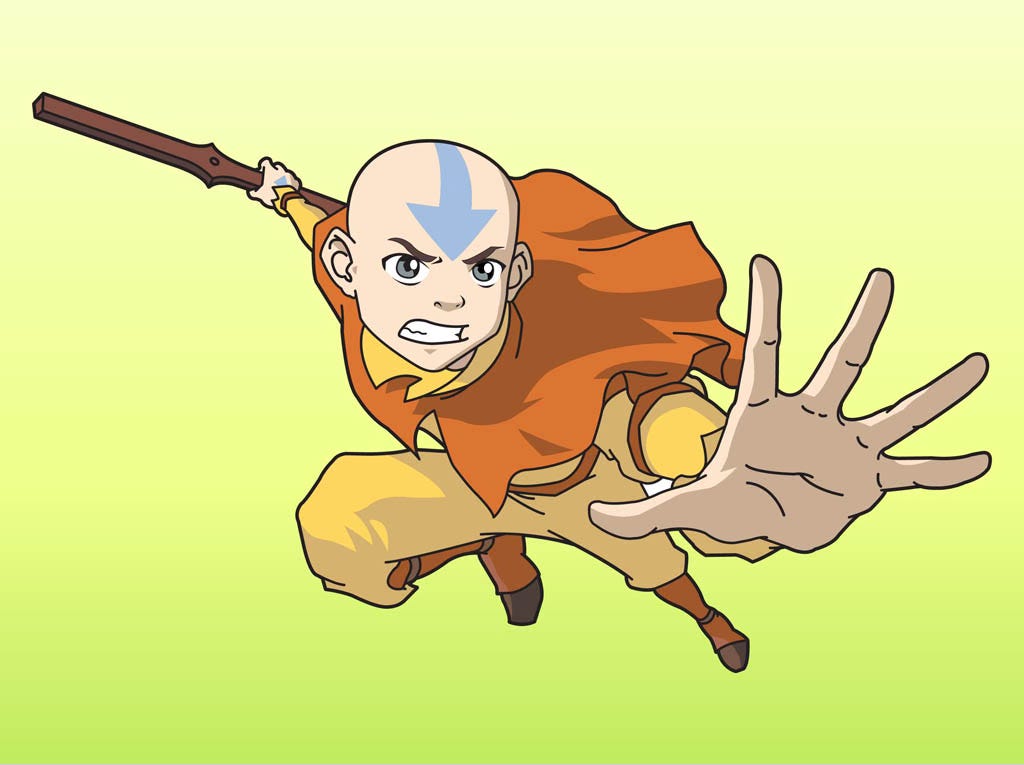How Avatar: The Last Airbender Inspires Us to Face Life's Toughest Challenges
How a Children's Show About Genocide Became a Guide for Overcoming Life's Greatest Struggles
In our darkest moments, we often turn to stories for hope and guidance– and few stories resonate as powerfully as Avatar the Last Airbender. If you haven’t seen it yet, by all means, get yourself to a television right now, and don’t let the animation or target age range fool you. At first glance, Avatar: The Last Airbender may seem like a simple children’s show, but beneath its colorful animation lies a tale of genocide, war, and spiritual resilience–it’s a powerful source of inspiration for all ages.
For newcomers to this animated classic, Avatar the Last Airbender is set in a universe where some people have the power to control the elements of earth, air, fire, or water. They call it bending. One person, the avatar, can bend all four elements. The figure of the avatar is loosely based on the Dalai Lama and the Buddhist belief that he is the reincarnation of an immortal spirit.
The show begins with a young brother and sister from a water-bending tribe. They discover the avatar frozen in a block of ice. The avatar has been lost for a hundred years and during that time the Fire Nation has led a war of conquest on all the other nations. The avatar is seen as the savior of the whole world, but he is just a kid.
Over three seasons, we follow these characters as they confront their flaws, discover their talents, and grow into dynamic young heroes despite being surrounded by the often horrific effects of war.
While there is plenty of goofball fun as you would expect in a show aimed at kids, the undercurrent of courage, wisdom, and mercy is the meat that makes this show a time-honored classic. If you wanted something to watch with the whole family, that left you with models of overcoming adversity while keeping your faith and humanity intact, avatar has no rivals.
Courage
Harper Lee describes courage in To Kill a Mockingbird like this,
I wanted you to see what real courage is, instead of getting the idea that courage is a man with a gun in his hand. It’s when you know you’re licked before you begin, but you begin anyway and see it through no matter what.”
We see that in Aang, the avatar. Through the course of the story, we learn that he got lost after running away when he learned that he was the avatar. In his absence, his entire people, the Air Nation, are wiped out by the Fire Nation. Large parts of the other nations are also conquered. Most able-bodied adults are fighting in the war or are prisoners.
Despite his failures, Aang is deeply principled and resilient. We see him suffer when he discovers all of his people have been brutally murdered including the monk who raised him. Yet he perseveres, learns to use his abilities, and responds to the challenges he faces with dignity.
Aang’s courage isn’t about overpowering others with force; it's about enduring impossible odds, standing firm in his values, and never giving up—even when he knows he's ‘licked before he begins.
Throughout the series, his ability to utilize his bending lags behind the antagonists. One of the many memorable moments of Aang’s courage is when he rescues his friend Bumi from Azula’s clutches, despite knowing he is severely outmatched in bending skills.
Themes of facing one’s fears reappear when Zuko defies his father, when Sokka stands up to the Fire Nation, when Yue accepts becoming the moon spirit, and many other instances. It is these repeated acts of courage across all the characters that move the narrative forward and provide a major theme of the show.
Mercy
Avatar the Last Airbender hits another high note with the theme of mercy. In today’s culture war grace and forgiveness have been the biggest casualties. Mobs and administrators are content to fire people from their jobs and freeze out friends socially based on an accusation or differing opinion alone. It’s shameful and shows how far we have fallen from our founder’s ideals.
This series gives us a world ravaged by war. Mercy often seems like a luxury—yet Avatar: The Last Airbender shows us that mercy can be a powerful tool for change, even in the most unforgiving circumstances.
Time and again Aang is in the position of having to pass judgment on groups that have attacked and thwarted his mission. It’s clear that his character has the power to destroy any of these nations by himself, and the series goes out of its way to show that past incarnations have decided to take lives if they thought it was a path to peace. Yet he chooses mercy.
From the earliest episodes where Aang must face down an angry spirit, to stopping Jet from wiping out an entire town, to the final climax of the story, he chooses grace, emotional intelligence and mercy over violence. Katara even gets in on the action and chooses to spare the man who killed her mother. The show even takes the time to point out that forgiveness may be a path to peace, but it isn’t an easy one.
In our own lives, in a culture where cancelation often takes precedence over conversation, Avatar reminds us of the strength it takes to choose mercy—especially when revenge seems easier.
Having the characters uphold the values of mercy and forgiveness despite the cost in a world faced with genocide may be the single greatest accomplishment of this series. This is also why Avatar the Last Airbender is an excellent choice for times when we must face down our own monsters. We are all confronted with situations where we have the opportunity to choose integrity over despair. If you want to reinforce the values of mercy and forgiveness as you face difficult choices, you will find the inspiration you need here.
Wisdom
You must never give in to despair. Allow yourself to slip down that road and you surrender to your darkest instincts. In your darkest of times, hope is something you give yourself. That is the meaning of inner strength. – Uncle Iroh
Both themes of courage and mercy are supported by an overarching theme of wisdom and for much of the series, the character of Uncle Iroh embodies wisdom. He shepherds his nephew Zuko, prince of the Fire Nation, as he develops from a confused and angry teen who is tormented by his sister Azula and desperate for his father’s affection into a young man who teaches Aang fire-bending and ultimately becomes the new fire lord.
This belief in self-given hope is the core of Uncle Iroh’s wisdom. He teaches Zuko—and us—that true strength comes from within, even when the world around us is crumbling. In Iroh we see an example of a man who has made huge mistakes. He was a general in the war and led his own son to his death.
As guardian to Zuko, he proves a model that runs counter to his past as a general. While he is a very powerful fire-bender, his love for simple pleasures like moving a moon flower into the shade or brewing a cup of tea is a stark contrast to the lives of both the Earth King and his brother fire lord Ozai.
We see him allow Zuko to fail. He hangs behind when his nephew takes up being the blue spirit, but he stays close enough to encourage Zuko to change course at the right moment, sidestepping any danger that Zuko would be caught and brainwashed by the Dai Li and allowing Aang’s flying bison to go free.
Uncle Iroh’s wisdom isn’t just philosophical; it’s practical. He exemplifies how wisdom isn’t about knowing all the answers, but about patience, humility, and knowing when to act.
This is a fundamental part of leadership in the world of Avatar, and we see that reflected in all the members of the Order of the White Lotus, not just Iroh.
In Man’s Search for Meaning Victor Frankl writes about the struggle to find hope in the Nazi concentration camps in a powerful and moving description of what he experienced. Avatar the Last Airbender, shows us a similar journey in a way that reaches both young children and adults.
If fairy tales exist to show us how real dragons can be destroyed, stories like Avatar: The Last Airbender remind us of the power of courage, mercy, and wisdom. These virtues not only guide Aang and his companions as they face down the Fire Nation—they offer us a roadmap for confronting our own challenges with dignity and grace.
About
Diogenes in Exile began after I returned to grad school to pursue a degree in Clinical Mental Health Counseling at the University of Tennessee. What I encountered, however, was a program deeply entrenched in Critical Theories ideology. During my time there, I experienced significant resistance, particularly for my Buddhist practice, which was labeled as invalidating to other identities. After careful reflection, I chose to leave the program, believing the curriculum being taught would ultimately harm clients and lead to unethical practices in the field.
Since then, I’ve dedicated myself to investigating, writing, and speaking out about the troubling direction of psychology, higher education, and other institutions that seem to have lost their way. When I’m not working on these issues, you’ll find me in the garden, creating art, walking my dog, or guiding my kids toward adulthood.
You can also find my work at Minding the Campus
Diogenes in Exile is reader-supported. If you find value in this work, please consider becoming a paid subscriber or buying Thought Criminal merch to keep this mission alive.






